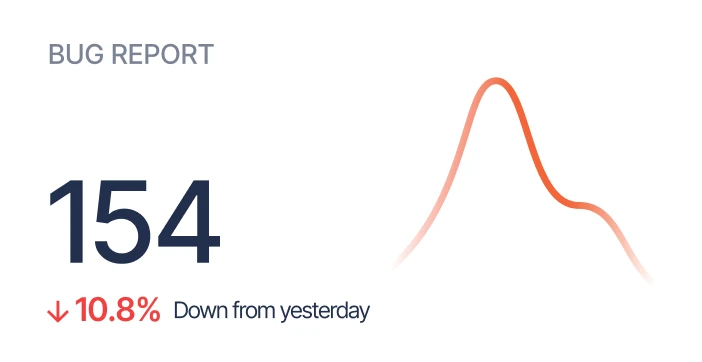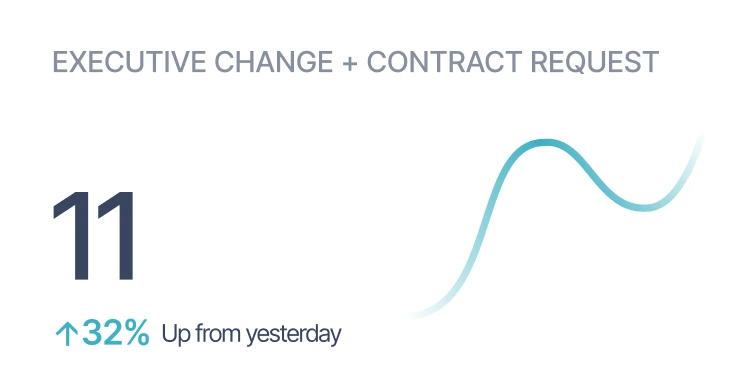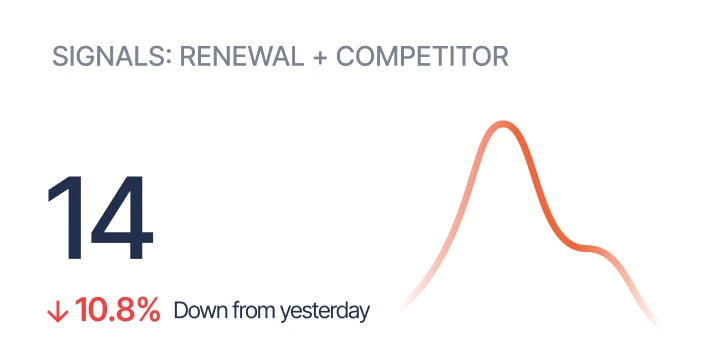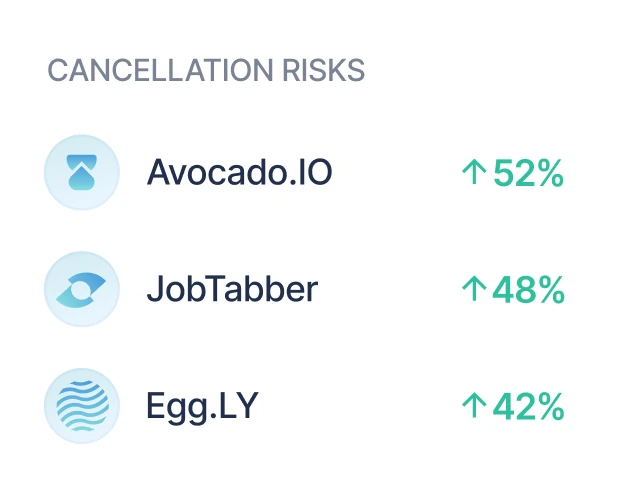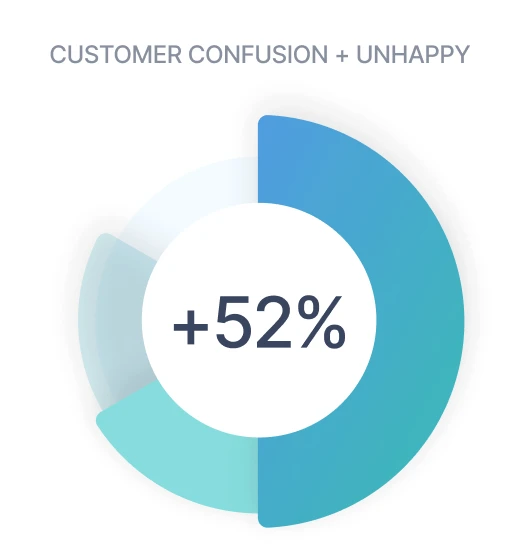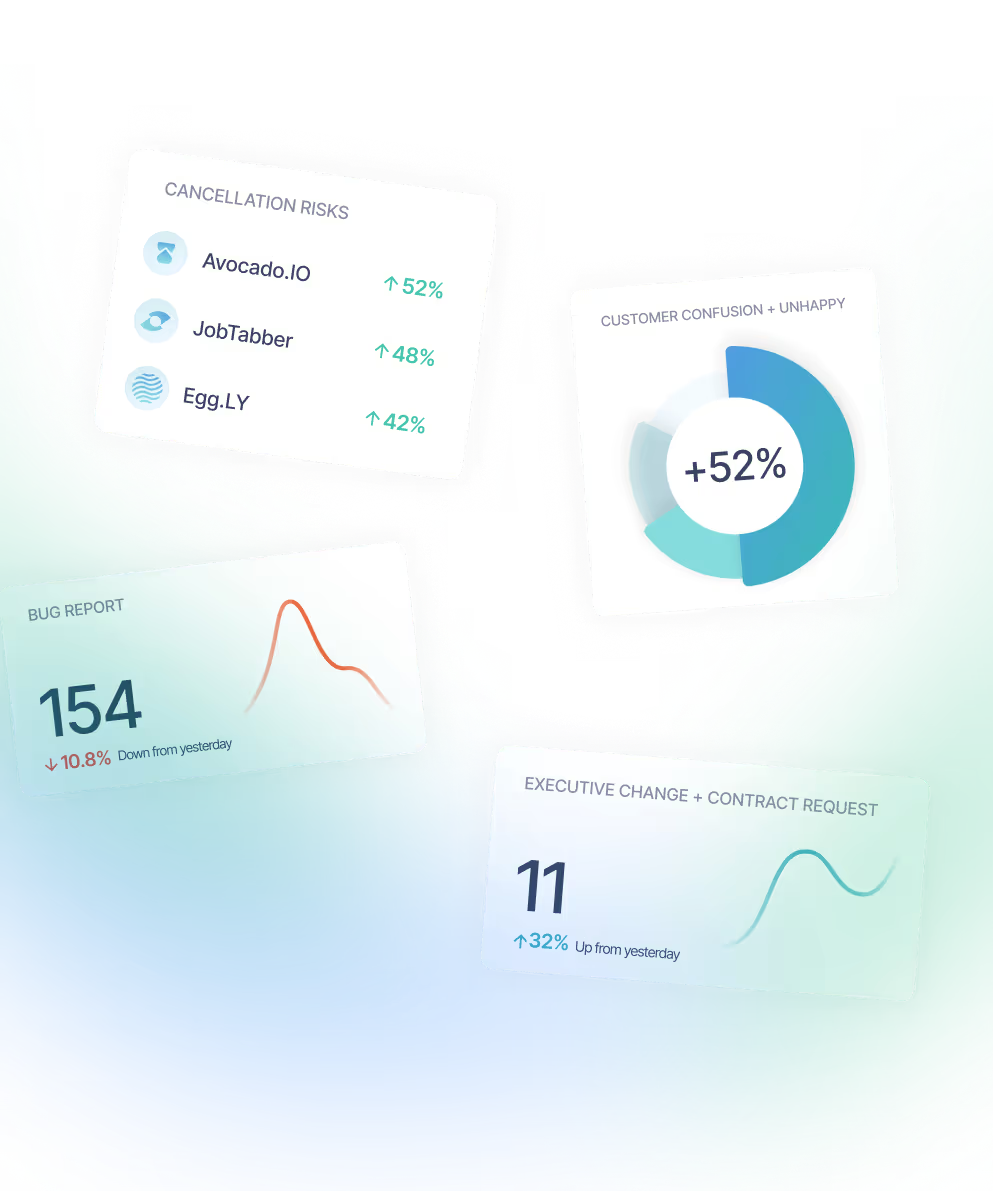Customer Signal
(noun) a gesture, action, or transmission delivered intentionally or unintentionally by a customer that conveys information, instructions, or insights.
Customers send Signals that help us predict churn, capture references, get in front of renewals, prioritize features, and just run our businesses better. Our customers are giving us this information in Slack, Email, Salesforce, Webinars, training sessions, quarterly business reviews, Zoom calls, etc.
For B2B SaaS businesses, these Signals are immensely valuable. For example, reducing churn from 10% to 9% in a $10 million ARR business means that every customer is worth $17k more in lifetime value (500 customers, $20k annual contract value). And reducing churn in this example is saving just five customers a year.
Examples of customer Signals
Identifying, classifying, and escalating customer Signals to the right people at the right time empowers companies with information and insights to preempt issues before they spiral and seize revenue opportunities to improve the bottom line.
For example, when a customer asks, “Can I have a copy of our contract?” in a support ticket, a Signal is sent. In a SaaS environment, the customer is likely signaling risk. Maybe they are evaluating a competitor. Maybe there has been an executive change or a shift in priorities. Regardless, every SaaS leader will agree that this signal needs to be escalated so action can be taken.
Below are a few other examples of customer Signals. This is not an exhaustive list; every company will vary on what is important. An interesting exercise is to sit down and list out the Signals that your teams should be watching for. The output of this exercise can be used to improve operations, user experience, training workflows, and more.
.png)
Where to find Customer Signals
Most of us have given our customers the ability to communicate with us using a variety of channels. After all, we want to hear from them. This allows us to gauge their health, status, and likelihood of buying more of our products and services.
Given the prevalence of multi-channel communications workflows, critical Signals are often trapped in layers of technology across multiple teams, gathering digital dust. The most common scenario for most businesses is that important customer Signals are hiding in plain sight. They’re trapped in email accounts, ticketing systems, call transcriptions, chat logs, and CRMs. And for most of us, the only way we utilize this information is if someone manually identifies, records, and escalates it.
How to use customer Signals
In today’s competitive SaaS environment, the most successful companies are learning to “listen” and interpret the Signals that their customers are giving them about their products and services. The category-leading companies are doing this at scale - automatically.
With SturdyAI, teams can easily sign up for alerts on specific Signals, accounts, and even competitor mentions. For example, the most appropriate team member in any group can get an alert whenever:
- One of your customers requests a copy of their contract or asks about their renewal date
- An account has a new executive, point of contact, or executive sponsor
- A user asks for information about adding more users or adding a new product or service
- One of your customers mentions one or more of your competitors
- A user reports an outage or bug
- A customer is signaling satisfaction and, ultimately, referenceability
What’s exciting about customer Signals
Customer Signals undoubtedly help us understand our customers better. Specifically, by defining and leveraging Signals at scale, we can have a clear understanding if our products are delivering the value promised at the time of the sale. We can also better understand if our customers are willing to grow with us or if they are growing away from us.
Rapid advancements in technology, especially AI, are making it easier to help brands quickly and responsibly use data to understand customer behaviors and predict customer needs. When we have the ability to discover new patterns and insights in our data, we are better able to anticipate future decisions. In the end, harnessing customer Signals presents opportunities—and incentives—to deliver better service and find new ways to grow.
.avif)
.png)

.png)
.png)


